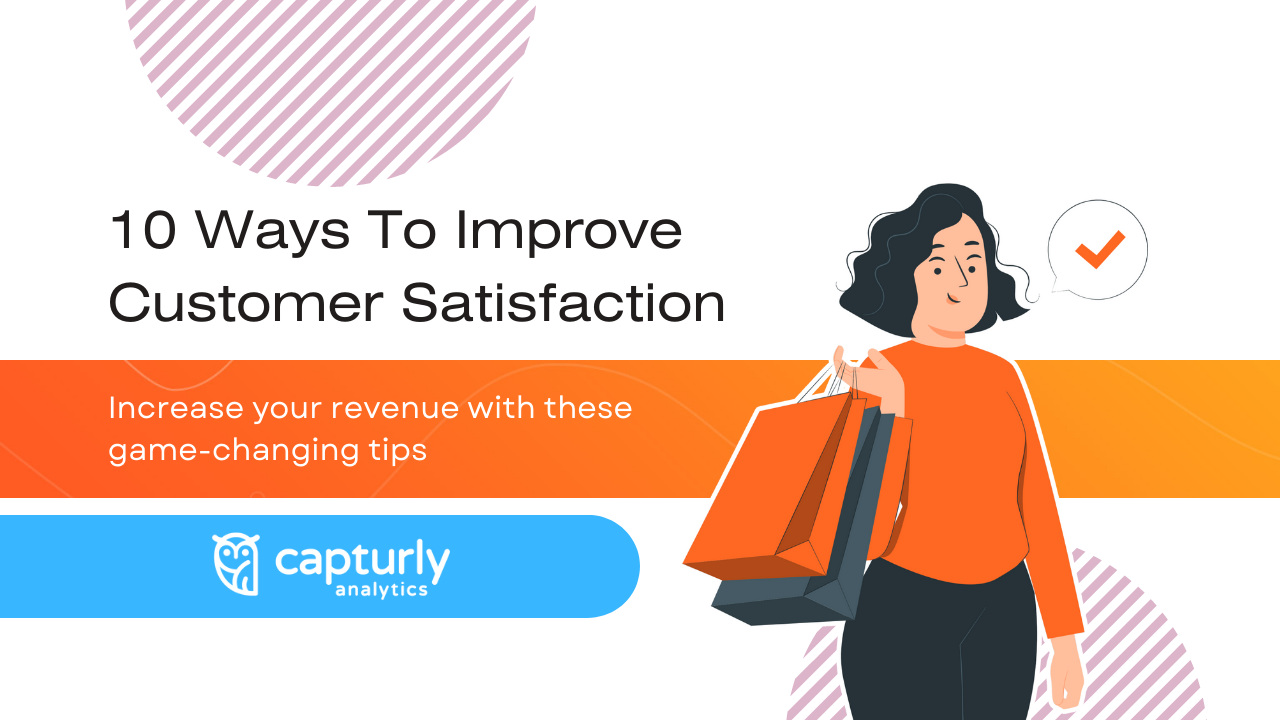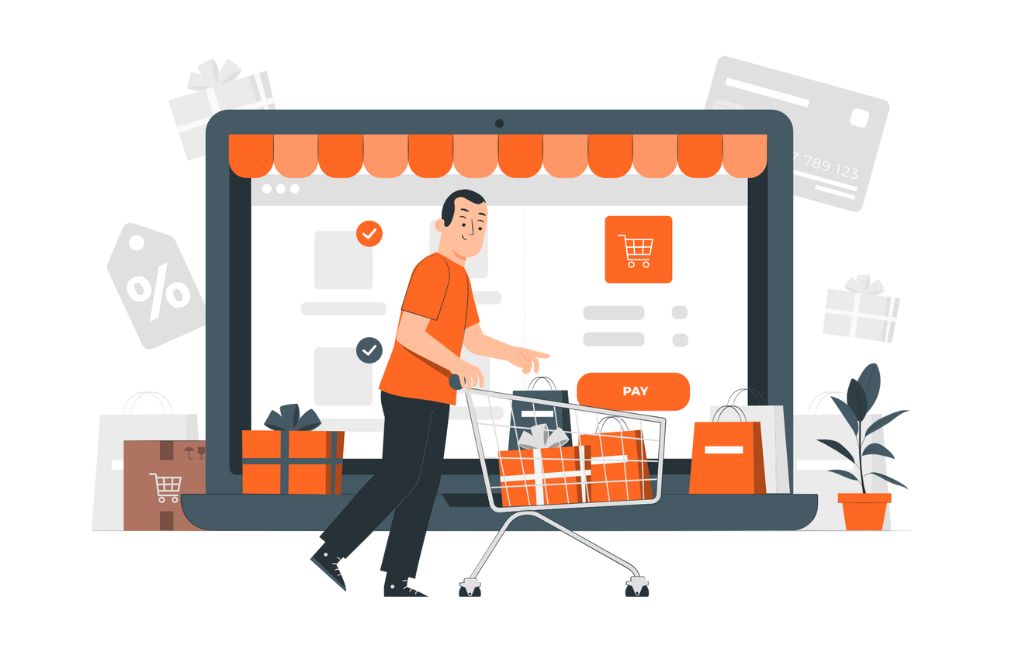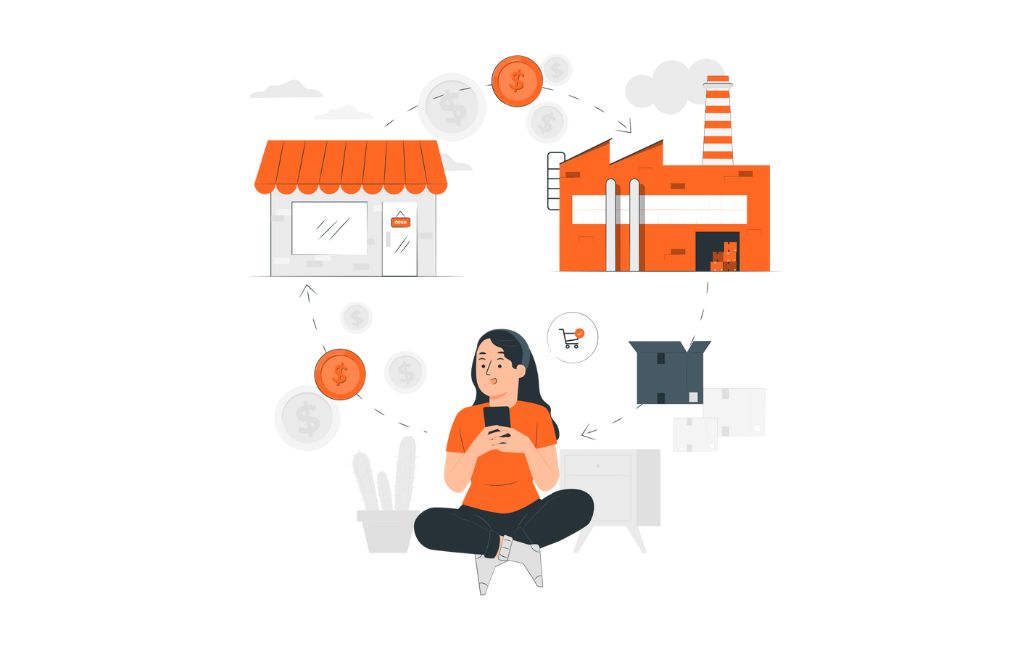Isn’t it great that we live in a time where you don’t necessarily have to leave your home to provide goods or services to a target market? It most certainly is. This is what e-commerce is all about; providing services and goods to clients through the internet.
One of the key factors you need to pay special attention to for your e-commerce business to grow is customer service. This is primarily because customer satisfaction, or lack thereof, directly impacts your business. We shall look at a few pertinent issues regarding customer satisfaction.
Table of Contents
What Do You Need To Start an E-Commerce Business?
This type of business is just like any other, so you should do your due diligence before you start. So what does an e-commerce business need to start?
Product or Service
While there are many internet-based businesses you can go into, you should determine which niche you want to cater to. You will need to evaluate your product against the target customer base to determine how viable your business idea is.
Business Plan
After determining which product or service you want to offer, the next reasonable step is to write up a business plan. The great thing about starting a company with a business plan is that you can clearly outline your thoughts, plans, and mission statement.
A Working Website and Online Store
There are many website developers and app builders you can use to help you with your e-store. On the other hand, you should keep an eye out for errors as well. Use this JavaScript tracking tool to help you and your developers catch errors before they cause problems. Your main focus with the website should be order fulfillment and ease of accessibility for customers.
Marketing and Launch
Since it is an online business, market it along all relevant social media platforms. A launch will also expose your new business to your new customer base.
The Importance of Customer Satisfaction to an E-Commerce Business
The main mode of interaction between you and your customer will be through online mediums. Since you are more likely not to meet your customers in person, their satisfaction, or lack thereof, will be reflected in your sales report and financial statements. Just as in physical stores, customer satisfaction influences return visits and word-of-mouth marketing, crucial for business sales.
Customer satisfaction also builds on brand loyalty, an area every business strives to achieve and maintain. The profitability and future survival of your e-business will be affected by customer satisfaction.
Did you know?
Companies with high customer satisfaction scores outperformed the S&P 500 in terms of stock returns, stock valuations, and cash flow, according to research from the University of Michigan. The study emphasizes the important connection between customer satisfaction and a business’ financial success.
10 Ways You Can Improve Customer Satisfaction at Your E-Commerce Business
With evidence of how well or adversely customer satisfaction can affect your e-company, paying attention to this area is vital. Without established customer satisfaction rates, customers will not continue to shop at your e-commerce store which will result in a steady decline of sales. To combat a lack of customer satisfaction, here are ten ways to improve customer satisfaction for an e-commerce business.
Seamless Website Navigation
When customers visit your e-commerce website, they expect a smooth and hassle-free experience. Nothing is more frustrating than a website that hangs mid-purchase or takes too long to load. Such issues will decrease customer satisfaction. These problems can be solved by providing easy visual icons, such as arrows, shapes, and even smaller photographic images that will catch the eye more easily. In today’s time, it has also been a trend where making your product or website more simplistic gains more traffic so making your website’s pages this way may gain you more traffic.
To enhance website navigation:
- Optimize page load times: Compress images, use efficient coding, and leverage content delivery networks (CDNs) to ensure quick page loading.
- Clear call-to-action buttons: Make sure buttons like “Add to Cart” and “Checkout” are prominent and easy to locate.
- Mobile optimization: Given the prevalence of mobile shopping, ensure that your website is responsive and functions seamlessly on smartphones and tablets.
In recent years, the trend has been towards simplifying website design for better user engagement. A clean and straightforward layout can improve your website’s traffic and customer satisfaction.
Comprehensive Product Information
Provide enough information about your products or services. This will ensure that the customer makes an informed decision. In this area, too much information can also hurt and lead to an increase in bounce rate from a site, so be very cautious when adding information and ensure there are no typos.
This also depends on the site because putting too little data about a product or service on a site may misinform the consumer and result in a purchase where the consumer is not satisfied, thus possibly leaving a bad review or complaint for the item or service at hand. Therefore, your best bet here is to keep everything brief and to the point but also prioritize the goal of informing the public with information.
To optimize product information:
- High-quality images: Include clear, high-resolution images that allow customers to examine products closely.
- Detailed descriptions: Write concise but informative product descriptions that highlight key features, benefits, and specifications.
- Customer reviews: Encourage customers to leave reviews, as they provide valuable insights and build trust among potential buyers.
The amount of information needed may vary depending on the complexity of your products but always prioritize clarity and accuracy.
Personalization for Diverse User Segments
Customers have diverse preferences and needs. Different customers will be drawn to various products on your website depending on factors particular to them, such as location. To ensure the consumer has the best experience, you can personalize items based on their shopping history and location.
While every business has a target market and reaching them is the company’s goal you must also consider consumers on the outside of this and personalize your site to the widest customer base possible while also still targeting the main segment. This is hard and often a challenge many startups eventually deal with and hopefully conquer. Capturly’s segment heatmap tool shows you insights into the user behavior of different user segments.
To implement personalization:
- Location-based customization: Consider offering products or promotions based on the customer’s geographical location.
- Shopping history: Analyze previous purchases to recommend complementary or similar products.
- Personalized recommendations: Use algorithms and machine learning to suggest products based on browsing and purchase history.
While focusing on your core target market is crucial, personalization can broaden your customer base and improve loyalty among existing customers.
Valuing Customer Feedback
Feedback helps you to know your customer’s needs and wants. You can then act on this information, and match said needs as closely as possible. This is a huge factor when having success in a product’s business plan as there is much trial and error at first when introducing products to customers online. Since customers cannot physically try on or see the product or service offered, the main support of purchase is solely feedback from other people who have taken a chance on this website’s item of choice.
To leverage customer feedback:
- Implement customer surveys: Use online surveys to gather feedback on various aspects of the shopping experience.
- Review customer reviews: Regularly monitor and respond to customer reviews on your website and other review platforms.
- Act on feedback: Use the information collected to make necessary improvements to your products, services, and website.
Customers rely on the experiences of others when making purchasing decisions online, making feedback crucial for building trust and satisfaction.
Employee Satisfaction Matters
You should think why do we speak about employee satisfaction when the topic is about customer satisfaction? Well, employee satisfaction directly influences customer satisfaction. Happy employees can translate into better customer interactions and, potentially, loyal customers. When employees are content and engaged, they are more likely to provide exceptional customer service, going the extra mile to meet customer needs. Happy employees are motivated to deliver better service, and their positive interactions with customers create a welcoming and helpful atmosphere, leading to improved overall customer experiences.
Consider the following strategies to foster employee satisfaction:
- Employee incentives: Offer rewards or discounts to employees, encouraging them to become loyal customers.
- Training and support: Equip employees with the knowledge and tools they need to provide excellent customer service.
- Employee feedback: Actively seek input from employees about ways to improve customer satisfaction.
Keeping employees happy is a big part of keeping customers happy too. Additionally, satisfied employees are more likely to stay with the company, fostering long-term relationships with customers and promoting brand loyalty.
Swift Conflict Resolution
While issues and conflicts may arise occasionally, you should resolve them swiftly and keep things as simple as you can. This way, your customers feel heard and taken care of. This can also be associated with numerous factors inside and outside of the company. While we will not go into the specifics here as other ways are listed all around, you can definitely infer that any conflicts that do arise internally or externally need to be handled accurately and as quickly as possible.
To resolve conflicts effectively:
- Empower your customer support team: Ensure they have the authority and resources to resolve issues promptly.
- Streamline the process: Develop a clear protocol for handling complaints and conflicts.
- Communicate openly: Keep customers informed about the resolution process and expected timelines.
A well-handled conflict can turn a dissatisfied customer into a loyal advocate for your brand.
Efficient Logistics
Shipping and delivery can make or break your e-company. A customer’s orders should be delivered in good condition at the agreed-upon time. Always keep the customer informed by offering a tracking link for their package.
This also will be dependent upon whatever shipping service you trust when sending your products or services to other locations. The efficiency of the tracking link with the package is vital because it provides the purchaser with security and confirmation that the item is no longer in the company’s hands. It also allows the buyer to know whom they should contact if the package somehow goes missing by chance.
To optimize logistics:
- Reliable shipping partners: Choose reputable shipping companies known for their reliability.
- Package tracking: Provide customers with a tracking link for their order so they can monitor its progress.
- Clear shipping policies: Communicate shipping times, fees, and return policies clearly on your website.
An efficient logistics system not only satisfies customers but also strengthens your reputation.
Diverse Payment Options
The more payment options available for your clients, the less hassle it is for them to complete a purchase and the easier it is for you to gain more customers. You want to offer a few modes of payment to cater to your vast network of consumers. A few common ones are Debit, Credit, Mastercard, Visa, gift card, PayPal, Venmo, or Cashapp. There are even smaller payment routes that are less commonly known that would not hurt including in the latter half of the purchasing process.
Here are some common options to consider:
- Debit and credit cards: Accept major credit and debit card providers.
- Digital wallets: Include options like PayPal, Venmo, and Cash App.
- Gift cards: Allow customers to redeem gift cards for purchases.
The more payment choices you provide, the more accessible your e-commerce store becomes to a broader customer base.
Engage with Discounts and Promotions
A neat way to build brand loyalty and keep your customers happy is by offering annual sales and discounted products. Many beginning and established sites have started the trend of first-time customers experiencing this upon landing on the website’s homepage. They usually come in the form of a pop-up when being a new consumer.
However, in regards to loyal clients that you have had for years, they are usually subscribed to the e-commerce site by email and will receive coupons and discounts in their home address or email inbox. Rewards programs are a main factor that exists today where companies can acquire the buyer’s NAP (name, address, phone number) data and store it to keep them up to date on trends and discounts happening at the company.
To optimize promotions consider these approaches:
- First-time customer offers: Greet new visitors with exclusive deals to incentivize their initial purchase.
- Customer loyalty programs: Reward repeat customers with discounts, early access, or exclusive offers.
- Seasonal promotions: Create excitement with limited-time offers tied to holidays or special occasions.
Accessible Customer Support
Customers feel more accommodated when they can reach an e-business through different platforms and modes. You can have different social media platforms where clients can get help quickly and conveniently. If not on one’s website most companies today usually have an email listed on their Facebook or Instagram page where a customer can directly contact the business.
There are also chatbots that can be programmed on a company’s website, or purchased through software, that will provide the client with a portal to access that is purposefully there for customer support. A consumer will have easy access at all times this way if they do have any questions or concerns.
Conducting a customer analysis will show you whether the e-business is satisfying their needs and wants or not. You can also align this to see what ways are most effective for customer communication and can even ask them about what improvements should be made to your business as a whole.
To enhance customer support:
- Social media platforms: Maintain active profiles where customers can seek help and information.
- Chatbots: Implement chatbots on your website for instant customer assistance.
- Email communication: Display a visible email address on your website for direct contact.
Offering multiple avenues for customer support ensures that customers can reach out in their preferred way.
Challenges of an E-Commerce Company
E-commerce businesses face unique challenges that can impact customer satisfaction. Awareness and proactive measures are key to overcoming these hurdles.
Data and Security Breach
Online businesses are prime targets for data breaches. Security breaches can result in financial losses for both the company and its customers. To protect your business investing and executing the right security policies and protocols will greatly reduce your business’s risk exposure. A large amount of e-commerce businesses invest in cybersecurity insurance that can assure safety and provide a company with backup procedures in case a virus were to contaminate or something else were to occur.
Fraud
Credit card fraud is a big problem for online businesses. This is because when the perpetrators are caught, the transactions are reversed, and thus, the business loses money. However, a multi-level authentication process will help mitigate such cases. Dual authentication is a common way that exists today, where people use both email and text or call to very they are who they say they are. While some people do find this extra step a bit of a hassle it assists in security purposes and can keep the company and consumer from losing money.
Downtime
When your website crashes, it opens the e-business up to many problems, including hackers and loss of sales. Many times a customer attempts to go to a website and they run into a site not cooperating they will simply not return to it.
Therefore, it is vital that downtime for a site becomes as minimal as possible. There are cases where many sites program a message if their site is updating and will have it show instead of an error message. The right software issues and domain hosts can help you avoid downtime issues and keep it where your company is forever expanding.
These are some of the top dangers an e-business might face, but others include digital regulations, taxation, and viruses. Being proactive regarding an e-commerce company is the smartest way to secure a future for your company because you are making plans now for issues you will most likely face at some point in the future. Having a plan in place will help you avoid being caught unprepared and leaving your e-commerce company to face threats with no defensive strategy.
Conclusion
There is a great need to ensure that your customers are satisfied with your business’s products and services. The information above will help you as you start your e-commerce business and keep your customer satisfaction rates soaring. By having strong customer satisfaction rates and relationships, your e-commerce business will see an increase in sales and have a strong sales forecast because customers trust your products and believe in your company’s mission. Every e-commerce business should invest in customer service and relationships because it is one of the most important components of a successful sales strategy.
Author Bio
My name is Taylor McKnight and I am a Digital PR Specialist representing Apex Chat, a company providing digital chatbot services to businesses in various niches.
Make sure to have a clear and user-friendly return policy on your website.
Provide easy-to-follow instructions for initiating returns or exchanges, and consider offering prepaid return labels for added convenience.
Monitor your social media channels closely and respond promptly to customer inquiries or complaints.
Address issues professionally and try to take the conversation to a private channel to resolve the matter.
Yes, ensure your e-commerce business is compliant with data protection laws such as GDPR or CCPA.
Clearly outline your data collection practices in your privacy policy and obtain user consent when necessary.
Ensure your website is responsive and mobile-friendly, with easy navigation, readable text, and fast loading times.
Adding a free website analytics tool such as Capturly to your website is a good start to find out exactly how you can optimize your website for your customers.
Don't forget, sharing is caring! :)






